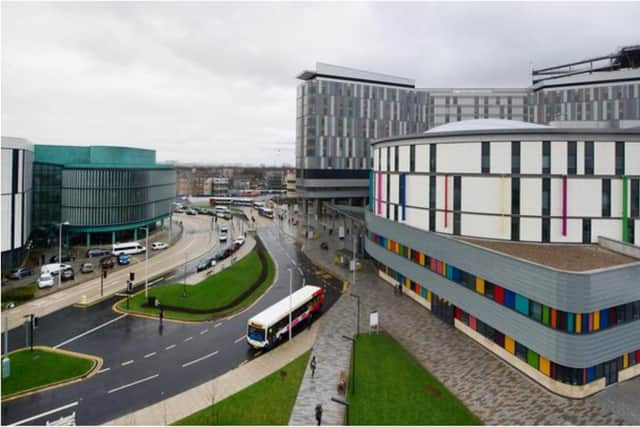Scottish hospital inquiry: Young patient had 'frightening' fits linked to infection
Molly Cuddihy was told she had metastatic Ewing’s sarcoma when she was 15 years old.
The now 19-year-old was cared for at the Royal Hospital for Children in Glasgow (RHC) and the Queen Elizabeth University Hospital (QEUH) in Glasgow between January 2018 and last year, where she was fitted with a line for treatment.
Advertisement
Hide AdAdvertisement
Hide AdNot long into her chemotherapy, Ms Cuddihy said her body went into septic shock – a life-threatening condition that happens when your blood pressure drops to a dangerously low level after an infection.


She also described her rigors – episodes in which your temperature rises – as “crazy”.
The young patient was soon diagnosed with mycobacterium chelonae, an infection in her line that she later discovered came from the hospital environment – air or water-borne – and that had probably caused her temperature spikes and fits.
Speaking at a hearing on Monday, Ms Cuddihy said she had to take a “very strong” course of antibiotics she likened to bleach to treat the infection.
She said: “The medication had horrible side-effects. I thought chemo was bad, but this was something else.
“I got a prolonged QT interval with my heart. This is when my heart pumps out the blood, but then doesn’t fill up fast enough, so I would often collapse.”
The Scottish Hospitals Inquiry is investigating the construction of the QEUH campus after issues at the flagship site were linked to the deaths of two children.
Earlier this year, an independent review found the fatalities were at least in part the result of infections linked to the hospital environment.
Advertisement
Hide AdAdvertisement
Hide AdDuring her treatment, Ms Cuddihy said her CRP (C-reactive protein) – an infection marker – was “incredibly high” around the time her body went into septic shock.
She said: “I got given treatment and I started to shake and have conscious fits.
“A nurse who I was close to got really upset because she thought it was something in her practice.
“But now we know it was an infection with my line.”
Ms Cuddihy told the hearing how her doctor, Dr Sastry, had to liaise with a specialist in Edinburgh about her treatment because “no one really knew and understood what this bug was”.
She said the doctors and nurses were just as much in the dark as she was about where the infection came from.
“Dr Sastry said he understood that it was the first case in 20-something years in paediatrics,” she said.
Ms Cuddihy then explained how Dr Sastry was being “held accountable” for her health declining.
The inquiry heard about one occasion when Ms Cuddihy’s brother came to visit her in hospital when her body went into septic shock.
“It was a frightening situation,” she said.
Advertisement
Hide AdAdvertisement
Hide Ad“My brother was home from France, and I was conscious that he was seeing me at my sickest, and I didn’t know what was going on.”
She said there was a limited number of staff at the time, adding: “My brother had to open 17 syringes to help, to try and get as much liquid into me as possible.”
The inquiry in Edinburgh, chaired by Lord Brodie, continues.
